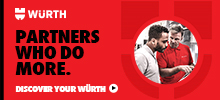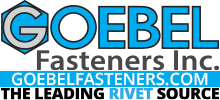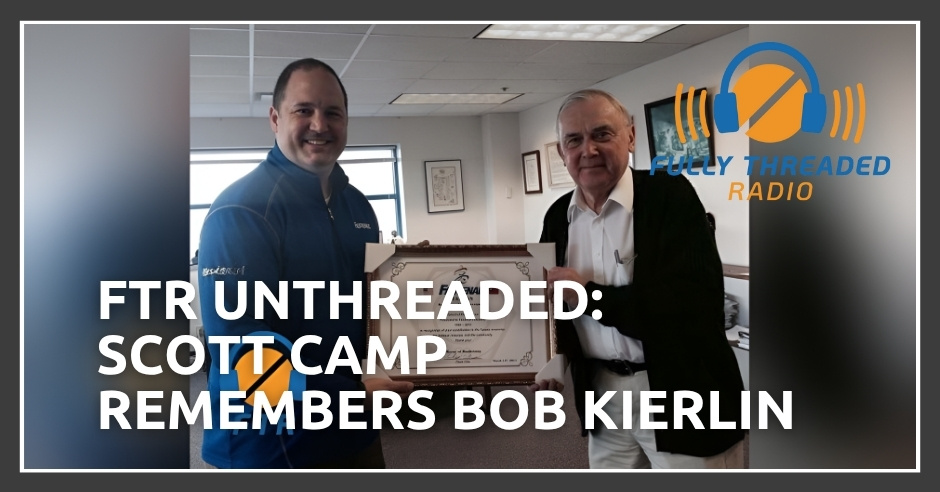
Atlas Distribution Services president Scott Camp remembers legendary Fastenal founder, Bob Kierlin. Scott explains how he came to travel with Mr. Kierlin during the early stage of his career, observing and learning lessons he carries with him as he builds his own company today. Bob Kierlin was known for his practicality, common sense and efficiency. Scott Camp shares his accounts of their time together which validate Bob Kierlin’s stellar reputation and explain why he was so successful in business and in life. Run time: 35:59
—
Listen to the podcast here
Important Links
FTR Unthreaded: Scott Camp Remembers Bob Kierlin
I speak with Atlas Distribution founder, Scott Camp. Scott is a 23-year-plus veteran of Fastenal, an organization that needs no introduction in the fastener industry, of course, founded in 1967 by an extremely driven man, the widely admired Mr. Bob Kierlin, who sadly passed away in February 2025.
During this conversation, Scott discusses his experiences traveling with Bob Kierlin as they checked up on branches, and Scott gained an experience. Eventually, after leaving Fastenal, he founded Atlas Distribution with the idea of helping distributors to unlock the potential of their global supply chains. Lots of ideas and skills honed under the tutelage of Bob Kierlin. I’ll get right into this conversation, and I’d like to thank the partners of Fully Threaded Radio who make it possible.
The title sponsors of Fully Threaded Radio are Brighton-Best International, Goebel Fasteners, and Star Stainless. Fully Threaded is also sponsored by Buckeye Fasteners, BTM Manufacturing, Eurolink Fastener Supply Service, Cresa, Endries International, INxSQL Software, Fastener Technology International, J. Lanfranco, MW Components, Solution Industries, Volt Industrial Plastics, and Würth Industry USA.
I want to thank Scott Camp for sitting down and having this conversation with me. I had to twist his arm just a little bit to do it. I know it’s a deeply personal experience to share things like this. I think we hit just the right tone here, and I think a lot of people will find this conversation very valuable and inspirational. No question, Bob Kierlin was a rare and towering figure in the fastener industry. Thanks for listening, everyone. Here’s this conversation with Scott Camp as he remembers Fastenal founder Bob Kierlin.
—
Scott Camp, I’m so glad you’re here. You’re up there in Winona, Minnesota, aren’t you?
Yes, sir, I am staring at the beautiful Mississippi River.
That’s the home base to a lot of good things, including the Mississippi and Atlas Distribution and a little fastener company known as Fastenal. A little bit about that, don’t you?
Yes, sir, I sure do.
Meeting And Working With Bob
We’re here to talk about Bob Kierlin. I’m so glad that you agreed to do this with me. It’s been on my mind for a while. I know there are a lot of people who know the name. They don’t know a lot about him, and you certainly have your own perspectives on that. Let me ask you, how long had you been at Fast and All when you first met Bob Kierlin?
I started in June of ’91, right out of university in North Carolina. I went to Elon University, and then it was Elon College. I started on June 12th of ‘91 as my first job out of school. I had been up to Winona for training not too long after I started. If I started in June of ‘91, it was sometime later that year that I came to Winona and had the privilege to meet Bob and many others.
You were a young guy at that point. How old were you?
I would have been about to be 23. Young guy, a long time ago.
A lot of foundational experiences. How did it happen that he asked you to accompany him on a road trip? You have a lot of experiences that stem from these road trips. There were more than one. How did the first one happen?
A lot of your listeners, I’m sure, know the movie Tommy Boy. It’s one of the best sales road trip movies out there, but it was nothing like that. Before we get into the road trip, there are a couple of other things I wanted to point out. I started in 1991, like I said. Out of college, I went to Winona not too long after that for training. Back then, I think Winona was about 63 million in revenue. I was working for the second branch in the Southeast, I was in Burlington.
The first branch was Rocky Mount, North Carolina. Fastenal was really a Midwestern distributor of fasteners, and they had spread down into Texas, I think in the late ‘80s or maybe 1990, into Texas, but no presence in the Southeast. Here’s this young kid out of college, who knew a little bit about fasteners from working construction in high school, but had the chance to go up to Winona, Minnesota. You have to remember, this is before the internet.
This was before being able to Google things and look them up. When I went up, Jeff Stengel was in charge of training at the time. They put me at this little sterling motel in Winona, flew in, and they dropped me off and had the weekend. I had no car, no transportation. Very frugal, very conservative, cost-conscious company. I bummed around for a day, Sunday, and then we had training on Monday. Bob came in like he would always do in a very humble yet direct way and set the tone for the training.
I remember I met him in person in Winona, but it wasn’t until our store was up and running and we had some pretty good sales going that Bob used to call every branch every day that had mapped or achieved more than $5,000 in revenue per day. I remember we had a big job for a wastewater treatment facility in North Carolina, and we had like daily releases. There was a lot of cadmium-plated A307 grade B heavy hex.
We were just releasing it every day. He was calling like every day for like 5 or 6 days straight. I got to know him a little bit from talking to him every day on the phone, because he would call probably at 7:00, 7:30 in the morning. We’d all be standing around the phone waiting for Bob to call because we knew we were going to get the phone call.
He did that for many years. He would call every branch every day that achieved a certain sales number. I think it was 5,000 per day. It made us feel special. The founder of the company would call and recognize our hard work, thank us for our hard work, and certainly recognize the sales and the profit. He knew all the numbers. He got his Bible every morning, got his report every morning, and he started making calls. I remember he did that for many years.
He was a very methodical person that way from the beginning. Now, this is again, the early ‘90s, people take it for granted. It’s such a giant company these days, but really, it grew fast, didn’t it?
Yeah, it was the basic model back then was 30% everything, 30% more stores, 30% growth, 30% in profit and earnings. It was just 30% to 40%. I just remember not having worked anywhere else. I feel fortunate and blessed that I went into an organization that was making the turn, investing. They had obviously gone public in 1987, so this was only four years or so after they went public.
I remember calling up my father like the first or second day on the job, and I’m like, “You will not believe what they’re letting me do.” Here’s this young man out of college, really two people in the branch at the time. Later, as you grow, you could hire resources, typically a part-timer, and you grow step by step because the company was so cost-conscious, so frugal. I think that’s how he got the title, the cheapest CEO.
He didn’t pay himself much, but everything was used furniture, used desks, and used equipment. We leased all of our branches at the time. We owned our pickups and the inventory, and the fleet. I got to do everything. I got to make sales calls. I got to price product, what to sell the B7 threaded rod for, and make deliveries and call on contractors and stock bins, and purchase product, source product.
It was like running your own business, and the decentralized decision making that a lot of companies talked about, decentralizing, empowering folks. That was in practice day one when I joined the company, and that’s why I stayed for over 23 years and why I think a lot of people stay a long time. It’s a wonderful culture and a great place to work.
Going On Road Trips With Bob
With that in mind, let’s turn back to these road trip experiences that you had. How did you get selected? The head count there must’ve been a lot smaller. You’re a young guy, but still, how did it happen?
I had moved to Minnesota in the fall of ‘95. I was working in the stores for a couple of years, and I jumped over into distribution, got into purchasing, living in Atlanta, working in the regional distribution center there. I had the opportunity to move to Winona in November of ‘95. I was already living in the area, not a small company of that size, but still a small, very intimate office environment.
I think I got tapped. I don’t know. I don’t remember his drawing straws. I don’t suggest I drew the short straw, but I was excited and nervous. Imagine the 26 or 27-year-old, whatever I was at the time, having an opportunity to drive. Bob did not like to fly. When Bob would go visit stores, he would drive me if we got tapped to do it. I got the privilege twice to accompany Bob from Minnesota to Florida and back.
These were road trips when he did a lot of driving. We shared the responsibility. It’s not like he sat in the back and I chauffeured him. He put in the work. He had very specific rules of when to get gas, when to stop, and when to eat. He was always so generous. I don’t remember exactly how it came up, but he had a trip planned, and there were a few of us in the room. I don’t know if I was nominated or if I volunteered, but it was a great opportunity to spend time with Bob.
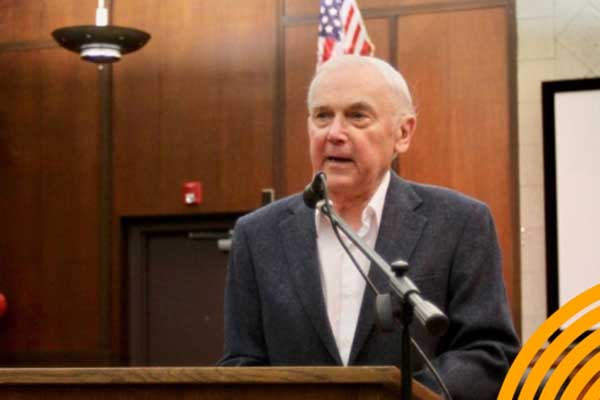
I wanted to ask you about that flying versus driving idea. He didn’t have a Joe Maddon complex, or did he do it out of frugality or fear, or just preference? What was that about?
I knew that when he was in the Peace Corps and other phases in his life that he flew, but I know he didn’t really care to fly too much. It was just a known thing that Bob preferred not to fly, and he drove, and all of us shared the responsibility or carried the burden, so to speak, to make sure he got safely from A to B. He just didn’t like to fly.
I cannot blame him. I wish I were in a position where I could have somebody go along with me whenever I needed them to.
We’re the guy who, no matter how wealthy he became, wouldn’t go spend the money to buy a plane or anything like that. That was never his style. There are a lot of things he could have done to make that easier, but he just liked to hit the open road. As long as there was an A&W on the way and we stopped and got a root beer float, he loved his ice cream and his root beer. That was usually on the way back when we got into Wisconsin, there were a couple of A&Ws is there off the highway because it had to be efficient. He had to be able to pull over, get gas, get something to eat, and get back on the road. It was all about efficiency with Bob.
Did he have the reputation as being a super frugal guy even at the time, or did that emerge? Was that widely known?
Ever since I came around in the early ‘90s, it was just known that he was very practical, very conservative. Didn’t believe in any waste. He was super efficient and very frugal. I remember he drove several cars over the years, but I remember, I think, the first time it was like a Chrysler Sebring or something convertible. That was about the most, the nicest car. Otherwise, it was a lot of minivans.
Chrysler Town and Country, but yeah, I drove a lot of very practical cars and minivans. Very unassuming would park. He would get there early, so he always had a good parking spot. There’s no reserved parking for the owners, the executives, or the leadership team. You want to have a good parking space, and you get to work early. Bob has always parked up front, not because of his title, but because he came in earlier than most people.
You’re out on the road, heading down to Florida. Was the point of the trip to randomly drop in on branches and check up on them? How did that go?
He just wanted to get out and see stores. He wasn’t too interested in seeing suppliers along those specific trips. Bob is more focused on the employees, being visible as much as possible, stopping in, seeing the stores, checking out the branch operations, thanking the team for their service, and always sharing some words of wisdom. He had very high standards. That’s the one thing I think about Bob, is how much he believed in the potential of people, and that most of us are not anywhere in the realm of maximizing our potential.
He felt that way about individuals, about family, about government, a lot of opportunity and room for improvement. Bob had very high standards. He expected you to perform at a very high level. Again, back then, there wasn’t Google Maps. All of the maps for the fast and all stores were hand-drawn by the managers and submitted to Winona, and they kept them in a three-ring binder, I think.
When you’re going out to visit stores, you’d go and you’d make photocopies from the binder of all the different branches. I remember some of the maps were horrible, and he would spend maybe 10 to 15 minutes trying to find the store. If the map was wrong, then he’d just eventually onto the next store and he wouldn’t waste a lot of time trying to figure it out.
I think his belief was that if the manager of the store cannot draw a map coming in from the different directions into the store, if you couldn’t do that, it’s probably not a store worth visiting, because if the map is wrong, there’s probably a whole lot of other things that are wrong. I just remembered he had patience up to a point. When he got to that point, it was time to move on to the next thing. He didn’t give you too many chances, but I just remember that. Onto the next. Fortunately, most of the maps were really good. We only had a few stores we had to skip.
Delving Into Bob’s Background, Insights, And Experiences
I guess I can understand that. Did you ever inadvertently, especially in the early times of traveling with him, get under his skin? Did you ever realize, “I think I pissed him off?”
There was one time that I think I pushed the envelope a little bit. It was my turn to drive, and we would drive all night. We drive through the night. Usually, sometimes we’ve stopped, but I remember he was very particular about it. At half a tank, you start really looking at the gas gauge, and you don’t let it get down to a quarter of a tank. You certainly don’t get it down to where the light comes on and your distance to empty is in the short term. He liked to make sure we didn’t get into the safety stock, if you will, of the fuel. I remember one time, I think I pushed the envelope. It’s like, “Bob, we can go another hour.” He just looked at me. I took the next exit, and we got fuel.
One look was all it took. Not a red liner. I don’t know if I would have made it, Scott.
Again, I was young. I wasn’t married at that point. I was in a relationship. My wife was a receptionist at the beginning of her career. She was a receptionist, and she moved into purchasing and did other things, but she would screen Bob’s calls because, of course, everybody wanted to talk to Bob, and he had a list of certain people that could go right through to him. Otherwise, the receptionist had to screen a lot of his calls, but that’s a whole other thing there.
I’m single, obviously drinking the blue Kool-Aid. I was all in, and I was up until I left to start Atlas. I just remember feeling so honored and special to have that opportunity to spend five days with a guy on the road and just pick his brain and talk. He was very open to questions and shared a lot of his growing up, a lot of his experiences in the Peace Corps, and just his perspective on life. Again, the family side of it, business, government. Later, he ended up serving in the state Senate. Just a very special person whom I learned a lot from early in my career.
Did you guys talk politics a lot while you were driving along? Did you ever get the inkling that he might eventually get into it?
No. At that point, I didn’t understand the writing on the wall and how he wanted to serve. I knew that there was a concept that he had that he talked about, which he eventually, I mean, he wrote about in his first book, The Unified Theory of Life. He published it in 1993, but he talked about the concept that four forces account for the development of societies in the modern world, the family, education, business, and government. He would not talk politics.
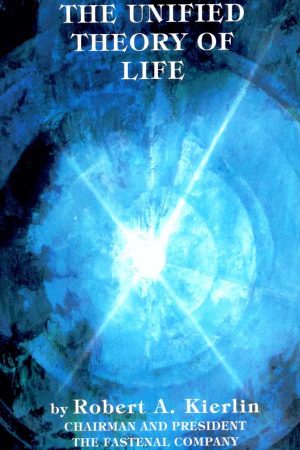
He was always very straight-laced. He did a really good job not sharing too much of his views in one particular. You knew where he stood, but it wasn’t about identifying with this party or that party or whatever. It was just real down-to-earth, common sense, grounded principles that, unfortunately, we’ve continued to stray from, think, as a society. Education was always something he talked a lot about, and the importance of education, the importance of family, and how to mix those core values together, and the responsibilities that business has to support the family. Work-life balance and all that was really important.
It wasn’t really a thing at the time, but Bob always believed in balance and in putting family and education ahead of other things. To the extent businesses can be good stewards of that, and then the government was extremely, I remember again, at that age, I wasn’t thinking politically. I wasn’t thinking the way I do now, 56, almost 57 years old.
I remember how he was frustrated with the inefficiency of the government. This goes back 30-some years ago, but I didn’t really see the writing on the wall of him actually serving in the state Senate until it had happened, which I thought was really neat. I think he did it as long as he could until I think he got fed up with Jesse, the body of the insurer. I think that was like the final straw. I couldn’t handle it anymore.
I made a lot of people rethink things. That’s for sure. I remember that. I know it’s probably not a very fair question. I’ll ask you anyway. What do you think he would think of the tariffs?
Bob was always a free-market guy. Again, I’m just trying to frame it in a way that doesn’t have any of my beliefs or thoughts in it, but I think he would look at it as a tax on consumers, which it is, and that should require congressional oversight and should not be able to be implemented unilaterally by the commander in chief. I think he agreed and understood the structure of government and that the checks and balances that were put in, and I think he would see it as probably an unlawful thing. I don’t know, that’s just my opinion.
I see what you’re saying. Just knowing what little I do, I have to say that I’m not surprised by the way you answered that. Again, trying to channel him, what do you think he would think of the current AI world? He wasn’t a Luddite by any stretch of the imagination. His first concept for Fastenal, mythologically, you can correct me, but it was the vending machine idea, which was really a tech approach to fasteners. What would he have thought of, or what did he think of AI?
He would probably see it as a tool to help people reach their potential. Again, the backdrop of this is that Bob felt that probably we as individuals were only achieving 40% of our capacity or our potential. I know that as you go through government, so if we as individuals are maybe achieving 40% of our potential, local government about the same, state government probably 30%, the federal government even less.
He believed that all these concentric circles and the further away you get, the less efficient it is. I would imagine he would look at the technology and the opportunity that it represents for people in businesses, truly to achieve maximum potential, or at least much more than the 40% that he believed we achieved as humans. I don’t know. I cannot go any deeper on that subject.
Get The Right People And Get Out Of Their Way
Again, I’m asking you to channel him, and I think it gives you an opportunity to really expand on what you took away from your time with him. It’s really a hat tip to the man. Let me ask you this then, can you identify what you really took away from all of this experience and all this exposure to Bob Kierlin as you built Atlas Distribution? Is there something that stands out in your mind to say, “I’m doing just what Bob you would have told me to do.”
I think first and foremost, I know Bob believed that organizations succeed to the extent that they utilize all of the resources that all of the members on the team pursue a common goal, number one. That was the most important. I think a small team or a large team, you’ve got people in the boat and they’ve all got to be rowing together in synchronicity. Everybody has to pursue a common goal. Whether that’s our business in Taiwan or China or here in the US, everybody’s on the same team and they’re all rowing in synchronicity.
People and culture are it. If you don’t get the top ten rules of leadership and Bob’s published them and they’re all over YouTube, I would encourage folks who want to learn more about the man. Look at some of the YouTube documentaries that are out there from the different founders, and you get a sense for the people and the value system that Bob is a product of. Really, the belief in people and the power of culture, and the importance of setting very high goals.
I think sometimes the goal setting is too much of a calculated process and not so much the power of belief. One of the reasons I think the company was so successful was the power of belief. They really had a strong belief in people and set very high goals, and they believed in the power of people. He actually published a book, The Power of Fast and All People, which there are probably some copies still circulating out there. I think the one thing that always really stuck with me, Eric, was hire great people, give them the tools and the resources to be successful, and get the heck out of their way.
Leaders must learn to hire great people, give them the tools and resources they need to be successful, and get out of their way. Share on XLet them get on with it. The micromanaging and too many layers of management, and just the whole concept of leadership versus management. I remember that I think Bob told me this first, and probably on one of the trips, the difference between leaders and managers. Really, when I distill it down, I think about if you find yourself having to manage people, you’ve got the wrong people, or you have the wrong leader, because you don’t manage people. You manage resources, you manage things.
You lead people, inspire people, you develop them, you train them, and you promote them, and you get out of the way. There are a lot of concepts around leadership that I think everybody in the organization lives by, and I certainly carry with them. How are the great people? They are the tools. Get out of their way, empower them, allow them to make decisions, hold them accountable when they do, and get up and keep moving forward.
The empowerment of employees is a lot companies say they’re decentralized. A lot of companies say that they aspire to be a bottom-up organization, and really, they’re not. Those are the things that I grew up young in my career, witnessing Bob and the other leaders of the company practicing what they preached. I carry a lot of that with me today.
More Memorable Road Trips With Bob
Let’s get back on the road with Bob Kierlin again. Scott, give us one story that you’ve been thinking about that you haven’t shared in a while. You told me a bunch of them when we were talking about this at the MWFA a couple of weeks back.
I don’t know if it was funny or tragic, but I remember one of the trips. We had left Winona, and Bob drove the first four hours. I drove the last four or so hours down to Indianapolis, which I think was like an 8-hour or 8.5-hour drive. We’d come in to pick up a new regional manager was the title at the time for the Southeast region. I won’t name any names.
Let’s just say, we’ll call him Mike, just as an example. We left Winona, drove down to Indy, and went to the airport. Of course, his plane was delayed. Bob and I are sitting there at the airport waiting for him to come out. He finally came out. We get loaded up in the rental car. He’s excited about the new regional manager with Bob. We’re going to drive down to North Carolina because we’re going down to attend his regional picnic. He’s not behind the wheel, maybe ten minutes, and he’s nodding off.
Bob’s in the passenger seat. We’re in one of these minivans. I’m in the backseat, right behind the driver. I’m watching him, and he’s nodding off. I’m looking at Bob. Bob’s sleeping. It’s probably midnight at this point, and we were going drive down to, I think we were going to Winston-Salem. He’s nodding off. I’m tapping him on the shoulder.
Like, “Dude, pull over.” We just drove eight and a half hours to pick this guy up at the airport, and waited around for an hour or so for him to finally arrive. He gets behind the wheel, and he’s falling asleep after ten minutes. He pulls over. I get in the driver’s seat. He’s in the back. Bob is sleeping. Mike is sleeping in the back, and I drove. I don’t know how far I drove.
You go to his regional picnic.
We’re going to hit. Yeah. I’m chauffeuring him to his own regional picnic. We got Bob safely to Indy, and now we’re trying to get down to North Carolina. I remember Bob waking up, and he looked in the back. He sees Mike sleeping. He looks over at me, and I’m white knuckled, driving, trying to stay awake. He’s like, “What happened?” I’m like, “It’s a long story.” Bob made me pull over, and he took the wheel, and we finished up the rest of the journey. We made it safely. I don’t think Mike was the regional manager that long, to be honest, not having anything to do with this trip, of course, it’s funny how things work out.
It’s a winding road.
Weren’t you with Bob? It was such a low-key, humble individual. It wasn’t about the spotlight. There was nothing animated about it. It was all very scheduled, very predictable, very much just he executed the plan. Probably the most enjoyable time was sitting with him at an outback route. I think it was the first time I’d ever been to an Outback Steakhouse. We had been on the road for, I don’t know, we’re making our way back, probably four days, and we had dinner one night. We actually stopped for a sit-down dinner, and Bob bought dinner, of course.
A humble leader always wants to go away from the spotlight. Share on XI remember sitting across from him in the Outback, and I think I had the Victoria’s Filet, which was probably the best steak I’d had at the time. Just sitting with him in an Outback, he had a glass of wine. I had a Foster’s beer, and just having that time together sitting at the booth by the bar, the Outback. They’re all the same. They all look the same. Just sitting with him and having a nice meal and talking about family. I was engaged at that point.
I wasn’t yet married, but he knew my wife because my wife, like I said, was a receptionist. I think we talked about Shiloh, we talked about my wife, and we talked about the goals that I had for my career and what I wanted to do. If he got on a topic that was near and dear to him, he would just go on and on. Otherwise, he was a great conversationalist as long as the topic was stimulating. I was always thinking, what can I talk about that he’d be interested in? I ended up asking him a lot about different things.
Peace Corps, his time at IBM, why he left IBM, and that always led back to culture and what he wanted to build, the type of company he wanted to build, and the type of culture that he wanted. Some of the best conversations had to do with cost estimations. Bob was very good at picking up the knife or the fork and saying, “Scott, what should this cost?” I’m like, “I don’t know.” I’m looking at it. “Is it stainless steel? Is it what it’s made out of? What’s the manufacturing process to make it? Is it stamping? What is the manufacturing process, and how much should it cost?”
He was like the first person who ever challenged me to think about how something was made and what all the cost drivers, like the raw material, the labor, transportation, and distribution. What does it cost to receive it and store it, and to finance the inventory? He was very good at that. He just had a drive to understand and drive out waste. Other than people not reaching their full potential, what frustrated Bob more than anything was waste.
If there was inefficiency, if there was unnecessary cost. I think early on in the company, one of the reasons they were so incredibly profitable was that they knew how to manage their costs. The cost of transportation, the cost of manufacturing, the cost of sourcing and procurement, and the human capital side of that as well. I remember just always being challenged by him. It took me a while. I got to the point where I would see him in the office and I would ask him, “Bob, what do you think this costs?”
I would hand him a part. It might be a CNC-machined part. It might be a PPAP level three, a special part for an automotive application. I would give them all the information and just give it to them. I’d see him later that day, and he’d come and he’d either handwrite his answer on a post-it note and give it to me, or he’d just tell me in the hallway, that’s a buck 28 a pound. If he wasn’t within 5%, plus or minus 5% like all day long.
What frustrates a leader the most is people not reaching their full potential and being inefficient. Share on XThat’s great.
He was one of the first to get me thinking about. That’s probably why I fell in love with Asian manufacturing, and just high-volume cold forged manufacturing is because I really had an appreciation for what the cost to produce that widget should be. Bob instilled that in me, and others after Bob, direct reports, people that I worked with were really challenging me on that. Not just fasteners, but injection molded parts and polypropylene or high-density polyethylene.
What should this thing cost? Bob was big on the tool repair, bringing that into the industrial services and even starting Fast Tool, I think it was in Mason City or Waterloo, Iowa. We started the Fast Tool Division back, I think, in 1993, if I’m not mistaken. The idea of selling power tools and then also having the service centers be able to repair and fix the tools was a neat concept. I remember at one time it was, “How much should this DeWalt power tool cost?”
If I look at your discounts from DeWalt on all the replacement parts and all the components, this drill would cost about $5,000 to make. Clearly, they’re producing it at scale for far less than that. That gave me the motivation to go back and renegotiate discounts with DeWalt on the repair parts because they were overcharging us for the repair parts. It didn’t matter what it was. If it were a nut or a bolt or a power tool, what should it cost? How do you drive out cost? A lot of it was acquisition costs, distribution costs, and how do you bring that product to market? He was always thinking bigger picture and inspiring others to think about the details as well.
Seeing Bob For The Last Time
You pulled a lot out of that. When was the last time you saw him?
I saw Bob, it was downtown Winona, one of the restaurants here. He and Mary were there, and I was in with my wife and my daughter, and just said a brief hello to him, and it wasn’t too long after that he had passed, and I went to the wake and the funeral. A lot of people are obviously in town, huge turnout as you can imagine, and support for a great man. It really happened quickly, really happened suddenly, and it was quite a shock to not only the organization but the Winona community, and as a whole, everyone suffered a big loss that day and continues to grapple with him having passed.
Of course. Winona is a fast and all town. The last time you talked to him in depth, did he give you any idea, thumbs up, thumbs down, like attaboy, or anything like that?
Yeah, we used to go to the Signatures restaurant in Winona, out at the Bridges Golf Course. Bob and Mary would dine there many times a night. If I were in town, if I had a supplier in from Asia, or I was with my family or others, he would always stop over and say hi. He always encouraged me. He was always rooting for me.
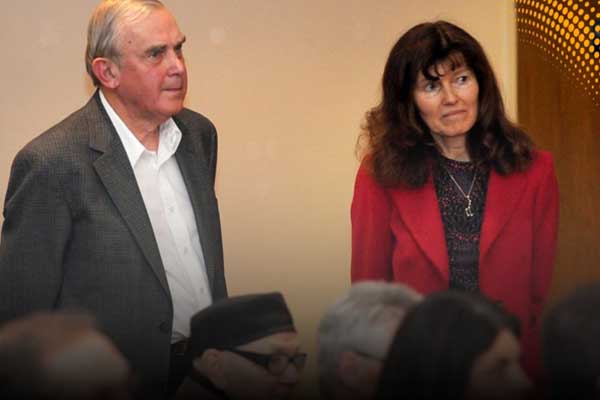
At least I had that feeling. When I resigned and left the company to start my business in Taiwan, the first company thanked me for my service. Thank you for your 23.5 years, and you’re going to do great. Just work hard, work smart, believe in people, and carry forward what you’ve learned. Every time I saw him, which was many times over the last 8 or 9 years after I had left, he was always coming up. How’s Atlas?
He even stopped in the office. We have an office right downtown in Winona. He was in the building doing something, I think maybe an accountant in the building. He was stopping in, but he had stopped in and said hello to the team. I think I was in Taiwan. I missed him. He was always there, encouraging us to do well and just do good by the industry and do good for our little Atlas company.
Episode Wrap-Up And Closing Words
You are. What a great testimonial to a great man. That’s what the real true heroes do is they encourage those around them. I’ll tell you, I saw you and your team recently here in the semi-rural Northeast Ohio area. We had an opportunity to break a little bread, and you’re there with your young team. I had to think quietly to myself that there you are passing some of the things you learned down to a younger generation, and they’re go-getter guys, and I know you’re doing really well, and you picked up a lot from Bob Kierlin. Thank you so much, Scott Camp, for sharing some of your remembrances with us.
My pleasure. A great man, and he’s taught, I don’t know, there’s probably hundreds of thousands of people that have ever worked for the company and had some impact, Bob, personally, directly or indirectly. He just had such a profound impact on the organization, the community, and the industry as a whole.
Bob, I’ve always wished there was more recognition, but Bob always believed in staying out of the spotlight. He always believed in letting the team celebrate the other individuals and the team overall. Jeff is probably the most influential person in our industry, certainly within the fastener industry, who did not get the recognition that he deserves by our standards, but he would have it no other way because of his humility and wanting to stay out of the spotlight.
Scott Camp, you’re doing what you can to pass that along. I know that with Atlas Distribution and your crew. Sure do thank you for sharing your remembrances of Bob Kierlin with us.
Thank you for the opportunity.

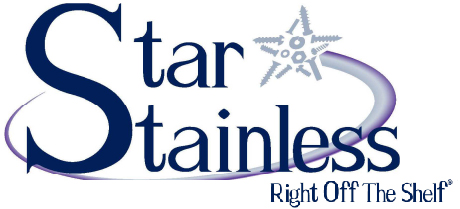
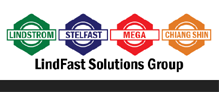
![[GC2610] Solution_FCH Banner_[220x100] copy](https://news.fastenersclearinghouse.com/wp-content/uploads/2025/09/banner_solutionind.jpg)
